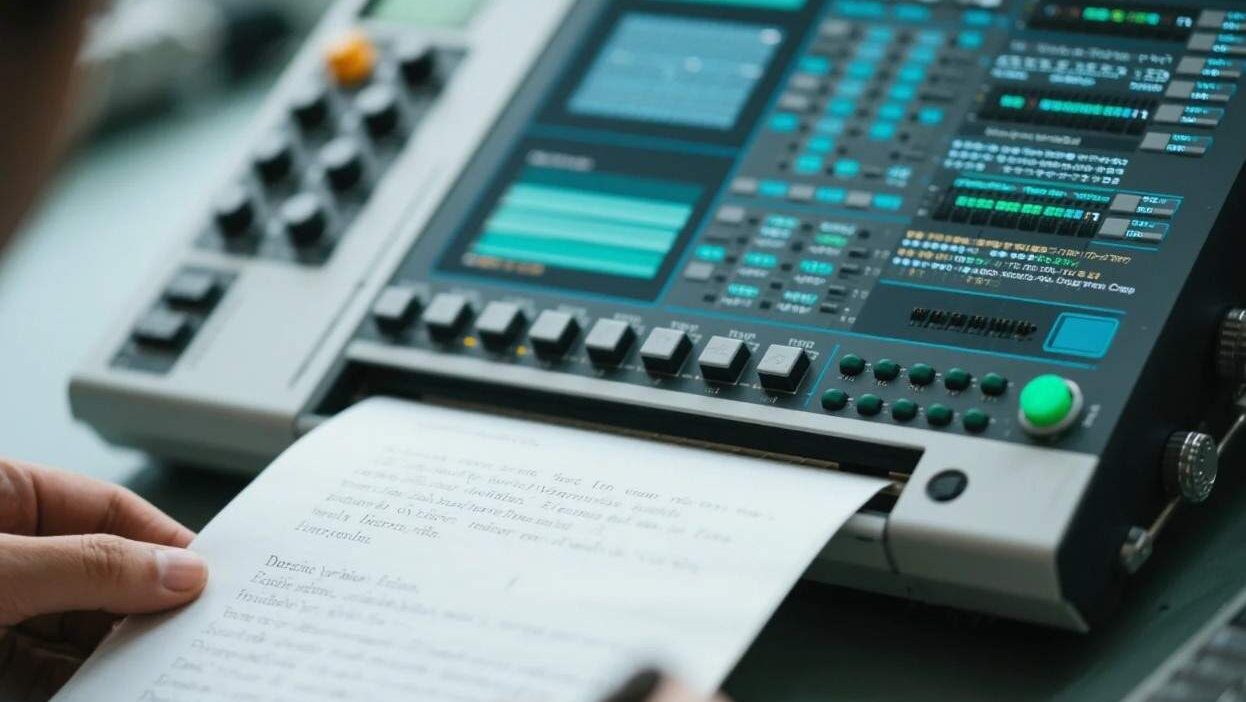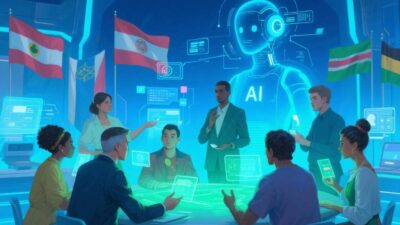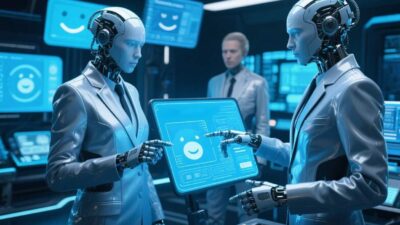When Machines Write Verse – Redefining the Boundaries of Creativity
Poetry has long been celebrated as the most intimate, human-centric form of artistic expression—a medium where emotion, culture, and imagination converge. But in recent years, a quiet revolution has unfolded: AI-generated poetry. By training machine learning models on vast troves of literary works, these systems now craft verses that mimic the rhythm, metaphor, and depth of human writing. From sonnets to free verse, AI is not just imitating poetry—it’s reshaping how we create, share, and even understand it. This article explores the rise of AI-generated poetry, its dual impact on human creativity, and what it means for the future of this timeless art form.
What Is AI-Generated Poetry? The Mechanics of Machine Verse
AI-generated poetry is the product of algorithms trained to recognize patterns in existing poetry and then generate original text that adheres to those patterns. At its core are natural language processing (NLP) models, such as GPT-3, GPT-4, or specialized tools like Poetron or The Poetry Machine. These systems analyze millions of poems—from Shakespearean sonnets to modern spoken word—to learn:
- Stylistic Nuances: Rhyme schemes, meter, and syntactic structures (e.g., iambic pentameter vs. free verse).
- Thematic Tropes: Recurring motifs like love, loss, nature, or identity.
- Cultural Contexts: The cadence of Japanese haiku, the surrealism of Pablo Neruda, or the confessional tone of Sylvia Plath.
For example, GPT-3 can generate a Shakespearean sonnet by mimicking the Bard’s use of iambic pentameter and archaic language, or craft a contemporary poem about climate grief by blending modern slang with ecological metaphors. Some tools even allow users to specify parameters—like “write a haiku about a rainy day in Tokyo”—to guide the AI’s output.
The Positive Impact: AI as a Catalyst for Human Creativity
Far from replacing human poets, AI is emerging as a powerful collaborator, enhancing creativity in unexpected ways:
1. Sparking Inspiration: Expanding the Poetic Toolkit
AI excels at recombining disparate influences to create novel combinations. A poet stuck on a theme might input keywords like “ocean” and “grief” into an AI tool, only to receive a draft that merges the vastness of the sea with the weight of loss—a perspective they might never have imagined.
For instance, when poet Amanda Gorman collaborated with AI to draft her 2023 Inaugural poem, the tool suggested unexpected metaphors (e.g., “the tide of history” paired with “the rhythm of our breath”), which she then refined into her final work. “AI doesn’t replace intuition,” Gorman noted. “It amplifies it.”
2. Democratizing Poetry: Lowering the Barrier to Entry
Traditional poetry often demands mastery of literary forms, vocabulary, and cultural references—barriers that can exclude newcomers. AI tools, however, lower these hurdles. Aspiring poets can experiment with styles (e.g., writing a villanelle or a ghazal) without years of study, using AI to correct meter or suggest rhymes.
Platforms like Poetry.com now host AI-assisted writing prompts, where users input a mood or theme and receive a draft to edit. This not only encourages experimentation but also fosters a more inclusive poetry community, where diverse voices—regardless of formal training—can contribute.
3. Preserving and Innovating Niche Traditions
Many poetic forms, such as Navajo chants or medieval Persian ghazals, are endangered as fewer people learn their intricate rules. AI can analyze these forms, generate examples, and even teach them to new audiences.
In 2022, researchers at MIT used AI to reconstruct fragments of Sappho’s lost poetry, cross-referencing surviving lines with ancient Greek meter. The result wasn’t just a scholarly tool—it sparked renewed interest in Sappho’s work, inspiring modern poets to blend her lyrical style with contemporary themes.
4. Collaborative Creativity: Humans and AI as Co-Authors
The most exciting frontier is human-AI co-creation. Poets are increasingly using AI as a “second brain,” where the machine drafts lines, and the human refines, edits, and adds emotional depth. This synergy can lead to hybrid forms—poems that blend the AI’s structural precision with the human’s raw, personal voice.
Take the project Collaborative Verse, where poets and AI co-wrote a series of poems about climate change. The AI generated data-driven lines (e.g., “The glaciers weep, their tears a slow arithmetic”), while the humans added visceral details (“My grandmother’s hands, calloused from digging clams, now cradle a dying oyster”). The result was a poem that felt both globally informed and deeply personal.
The Negative Impact: Challenges to Human Creativity
While AI enriches poetry, it also raises pressing questions about originality, homogenization, and the value of human effort:
1. The Originality Debate: Is AI “Creative”?
Critics argue that AI-generated poetry is derivative, recombining existing phrases and structures rather than creating new meaning. Unlike human poets, who draw on lived experience, AI has no consciousness, emotions, or intent. This raises ethical questions: Can a machine “own” a poem? And does AI-generated work hold the same cultural or artistic value as human-created verse?
In 2023, the Guardian published an essay by an AI poet named “GPT-3,” which argued, “I do not ‘feel,’ but I can mirror the human capacity to weave meaning from chaos.” The piece sparked debate: Was this a clever mimicry, or a sign that AI is approaching something akin to creativity?
2. Homogenization: The Risk of Formulaic Verse
If every poet uses the same AI tools, poetry could become formulaic. Models trained on popular styles (e.g., Instagram-friendly “instapoetry”) might flood the market with similar-sounding lines, diluting the diversity of human expression.
Consider the rise of “AI-generated love poems” on platforms like Etsy, where algorithms churn out lines like “Your smile is a constellation I’ve memorized.” While sweet, these poems often lack the idiosyncratic details that make human love poetry resonate—specific memories, quirks, or cultural references.
3. Over-Reliance: Stifling the Human Voice
Beginners, in particular, might rely too heavily on AI, avoiding the hard work of developing their own style. A poet who uses AI to draft every line risks losing the “voice”—the unique perspective that comes from lived experience, failure, and growth.
Author J.K. Rowling has spoken about the importance of “bad writing” in the creative process: “You have to write a lot of bad stuff before you get to the good stuff.” AI, with its ability to generate polished drafts, might shortcut this crucial phase of learning.
4. Ethical and Legal Hurdles
Training AI on copyrighted poetry raises questions about intellectual property. Who owns the rights to a poem generated by an AI trained on Maya Angelou’s work? Can a publisher sell an AI-generated anthology without compensating the original authors?
Additionally, AI models often replicate biases present in their training data. A 2022 study found that AI-generated poetry disproportionately used male pronouns and Eurocentric metaphors, reflecting the male-dominated canon of classic literature. This risks perpetuating harmful stereotypes unless addressed.
The Future: AI as a Partner, Not a Replacement
The rise of AI-generated poetry is not a threat to human creativity—it’s a transformation. To thrive, poets and technologists must collaborate to harness AI’s strengths while safeguarding what makes human verse irreplaceable: emotion, intention, and the courage to be vulnerable.
Poets like Amanda Gorman and Margaret Atwood are already leading this charge, using AI to augment their work without surrendering their voice. As Atwood wrote in a 2023 op-ed, “AI is a tool, not a talent. The heart of poetry will always be human.”
The Next Verse – Where Humans and Machines Collide
AI-generated poetry is a mirror held up to our own creativity. It reveals our desire to create, to connect, and to find meaning in the chaos of language. But it also challenges us to ask: What makes poetry “human”? Is it the blood, sweat, and tears of crafting a line? Or the ability to make a reader feel seen, even across time and space?
In the end, AI is not replacing poets—it’s expanding the canvas. By automating the mundane (meter, rhyme) and amplifying the extraordinary (imagination, emotion), it frees humans to focus on what we do best: telling stories that matter.
As the poet Mary Oliver once wrote, “Tell me, what is it you plan to do with your one wild and precious life?” For poets, the answer now includes not just writing, but co-creating with machines—crafting verses that are, at once, human and more than human.



